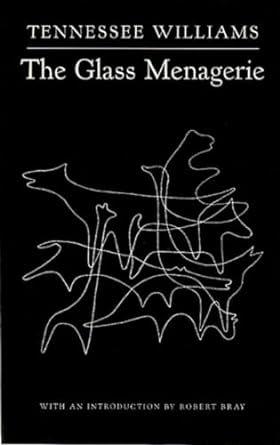Welcome, esteemed literary enthusiasts, to an insightful journey through the captivating world of Tennessee Williams’ “The Glass Menagerie.” In this literary guide, we will embark on a profound exploration of family dynamics, memory, and the search for meaning. Join us as we unravel the intricacies of this iconic play and uncover the profound insights it offers into the human condition.
Introduction
As we step into the world of “The Glass Menagerie,” we are transported to a cramped apartment in St. Louis during the 1930s. Against a backdrop of faded dreams and unfulfilled aspirations, Tennessee Williams crafts a poignant narrative that explores the complexities of family relationships and the power of memory. Join us as we delve into the lives of the Wingfield family and navigate the delicate balance between illusion and reality.
Quick Summary
“The Glass Menagerie” revolves around the lives of the Wingfield family: Amanda, the overbearing mother; Tom, the restless son; and Laura, the fragile daughter. Set against the backdrop of the Great Depression, the play follows the family’s struggles to cope with the harsh realities of life and their yearning for escape. Through a series of memory-inspired scenes, Williams invites us to witness the fragile beauty of their existence and the profound impact of their shared experiences.
Character List and Descriptions
Amanda Wingfield: The matriarch of the Wingfield family, Amanda is a Southern belle trapped in a world of faded dreams and unfulfilled aspirations. Her overbearing nature and relentless nostalgia for her youth serve as a source of tension within the family.
Tom Wingfield: The narrator and protagonist of the play, Tom is a restless dreamer trapped in a dead-end job at a shoe warehouse. His desire for adventure and freedom clash with his responsibilities to his family, leading to a growing sense of frustration and disillusionment.
Laura Wingfield: Tom’s fragile and introverted sister, Laura is the heart of the play. Afflicted with a limp and plagued by insecurities, she finds solace in her collection of glass figurines and retreats into a world of fantasy and illusion.
Jim O’Connor: A former high school acquaintance of Tom and Laura, Jim serves as a symbol of hope and possibility. His brief encounter with Laura reignites her sense of confidence and self-worth, only to end in disappointment and heartbreak.
Themes
Illusion vs. Reality: “The Glass Menagerie” explores the tension between illusion and reality, as the characters grapple with the harsh truths of their existence. From Amanda’s romanticized memories of her youth to Laura’s retreat into her glass figurines, the play illuminates the ways in which fantasy can both comfort and deceive.
Memory and Nostalgia: Memory plays a central role in the play, as Tom narrates the events of his past with a mix of nostalgia and regret. Through his memories, we gain insight into the characters’ hopes, dreams, and fears, as well as the lasting impact of their shared experiences.
Family Dynamics: At its core, “The Glass Menagerie” is a family drama that explores the complexities of familial relationships. The tension between Amanda’s desire to control her children’s lives and Tom’s yearning for independence reflects the universal struggle between parental expectations and individual autonomy.
Escape and Freedom: The theme of escape permeates the play, as each character grapples with their own desires for freedom and self-fulfillment. Whether through Tom’s dreams of adventure, Laura’s retreat into her glass menagerie, or Amanda’s nostalgia for her youth, the characters seek refuge from the harsh realities of their lives.
Loneliness and Isolation: Despite their physical proximity, the characters in “The Glass Menagerie” are plagued by feelings of loneliness and isolation. Whether due to physical disability, social awkwardness, or unfulfilled dreams, each character experiences a profound sense of alienation from the world around them.
Conclusion
In conclusion, “The Glass Menagerie” stands as a timeless exploration of family, memory, and the search for meaning in a world fraught with illusion and uncertainty. Tennessee Williams’ evocative prose and vivid characters continue to resonate with audiences, inviting us to reflect on the universal themes of love, loss, and the complexities of the human experience. Join us for more literary adventures and insightful discussions right here at Curvebreakers!
Looking for additional resources? Check out our comprehensive AP English Language and Writing study guide for more assistance on your literary journey. Happy reading!

